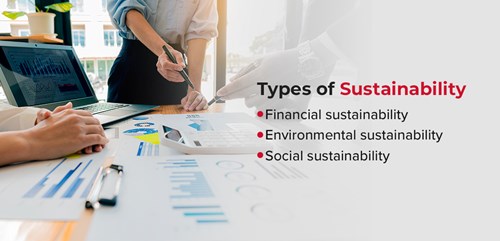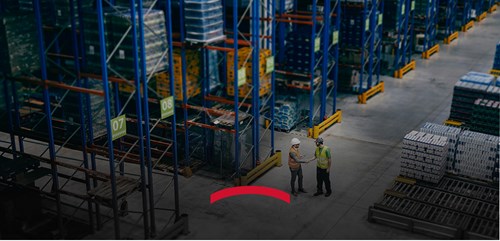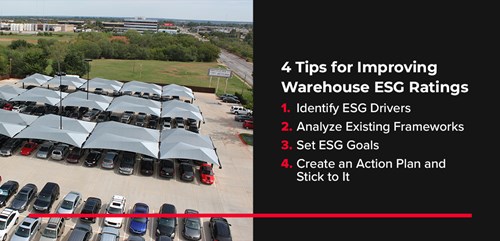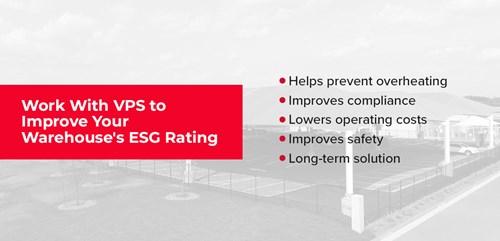Environmental, social, and governance (ESG) certification is becoming increasingly essential for all industries. Today, investors and clients are more aware of how their choices affect the environment and society. This growing awareness has impacted how they make business decisions, with many looking to partner with companies that share the same values as them and demonstrate a commitment to long-term financial, environmental and social sustainability.
ESG for warehouses is also essential. Warehouse managers and owners need to be aware of how ESG ratings affect their businesses and what they can do to improve their scoring. Before starting to improve warehouse ESG scores, it is essential to understand existing ESG initiatives and ratings.
Read the full article or jump to a specific section:
- ESG Ratings and Sustainability
- Types of Sustainability
- 4 Tips for Improving Warehouse ESG Ratings
- Benefits of Improving ESG Rating for Warehouse
- Work with VPS to Improve Your Warehouse’s ESG Rating
ESG Ratings and Sustainability
ESG is a framework businesses use to assess their impact on society and the environment. There are three main criteria for ESG.
- Environmental: The focus is on the number of resources a company uses, how sustainable its production processes are, and how much pollution it releases.
- Social: This section focuses on how diverse a company is, what causes it supports, and how it impacts the community around them.
- Governance: This refers to how a company is run and the internal systems used to meet the needs of all stakeholders, from investors to employees.
All three criteria highlight businesses’ impacts on the community and environment around them. While ESG is divided into three sections, those sections are often intertwined and evaluated accordingly. A business’s ESG initiatives and processes are assessed to create an ESG rating or score. The better the score, the more positive a company’s impact is on society and the environment.
ESG ratings are becoming increasingly important for any business, including warehousing, as consumers and investors turn to ESG ratings to determine whether they’ll invest in or partner with a company. However, there isn’t a standard for ESG ratings and scores. Different rating companies often use various methodologies, assessments, and scoring systems. Some scoring systems may use A to C, 1 to 100, or poor to excellent gradings.




